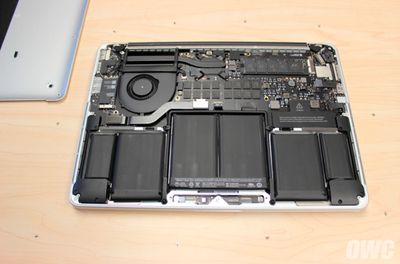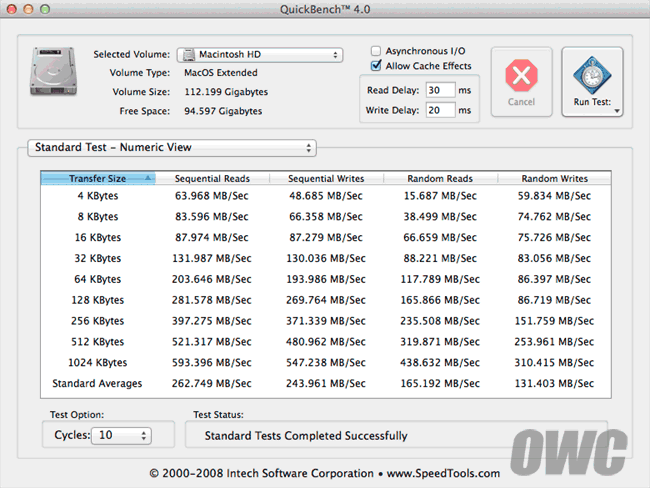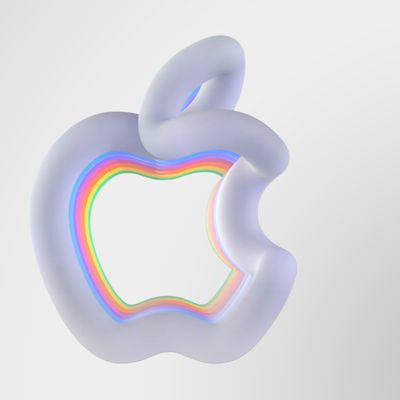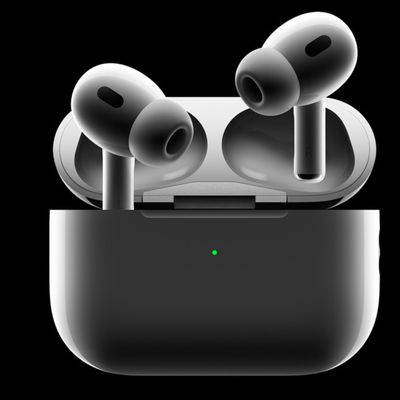Following this morning's release of Retina MacBook Pros with improved Haswell processors, OWC has procured both the entry-level 13-inch and and the entry-level 15-inch 2014 Retina MacBook Pro and provided a gallery of unboxing photos featuring the new devices.
As expected, the packaging on the updated versions is the same as previous-generation Retina MacBook Pros. The site did a quick teardown as well, revealing the internals of the new machines, which also appear unchanged.

OWC also conducted some speed tests on the solid state drives of the two machines, testing the 128 GB drive of the entry-level 13-inch version and the 256 GB drive of the entry-level 15-inch model using QuickBench 4.0.
With the standard QuickBench 4.0 test, the 15-inch machine (equipped with a Samsung SSD) saw top random read/write speeds of 524/567 MB/s, and top sequential read/write speeds of 584/555 MB/s. Large tests saw read/write speeds of 741/714 MB/s.

The 13-inch Retina MacBook Pro, meanwhile, saw top random read/write speeds of 438/310 MB/s and top sequential read/write speeds of 593/547 MB/s with its Marvell-controlled SanDisk SSD using the standard test. Large tests saw read/write speeds of 723/374 MB/s.

Launched earlier today, the new Retina MacBook Pros feature upgraded Haswell processors, more standard RAM for entry-level machines (8 GB for the 13-inch model, 16 GB for the 15-inch model) and a $100 price cut for the high-end 15-inch Retina MacBook Pro. The refreshed Retina MacBook Pros are available at Apple retail stores and in its online store.
For the full array of unboxing and teardown images, make sure to check out OWC's blog post.
Update 7/30: This post has been updated to reflect additional disk speed tests conducted by OWC.






















Top Rated Comments
The SSDs are the same as in the original Haswell rMBP, so to be honest there is nothing to see here. Bad tests and even worse analysis are just confusing everyone now.
R-Read R-Write S-Read S-Write
256GB 194 322 262 245
128GB 165 131 263 244
How is a Random Write faster than anything else?
Thank you. That makes much more sense now. Shame on MR for the very misleading spin.